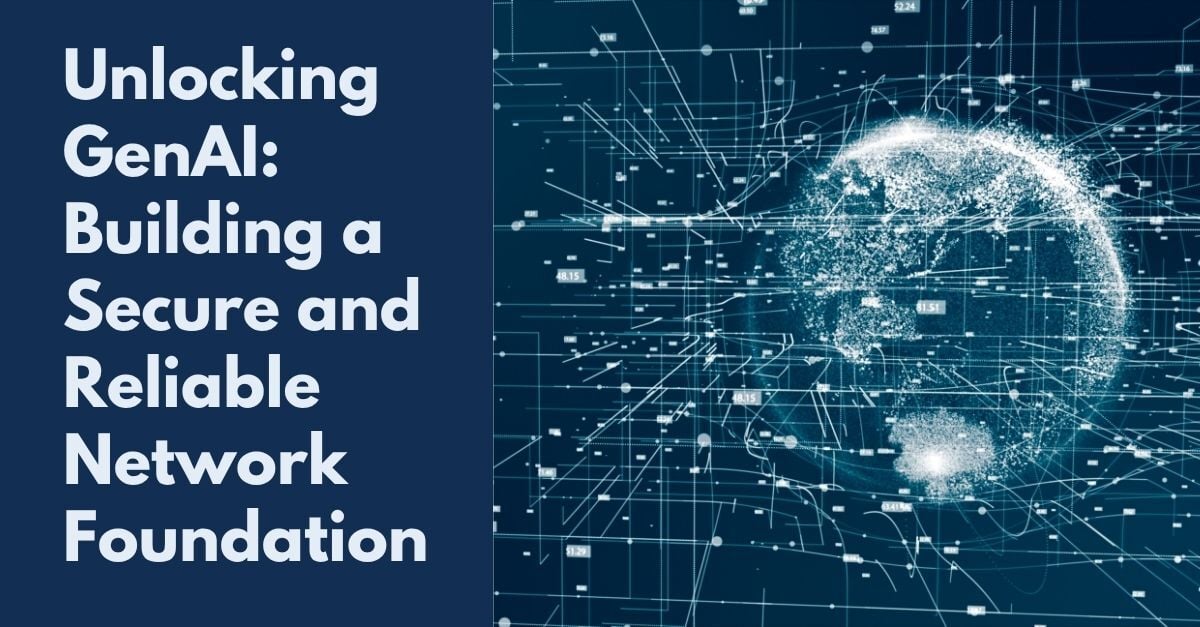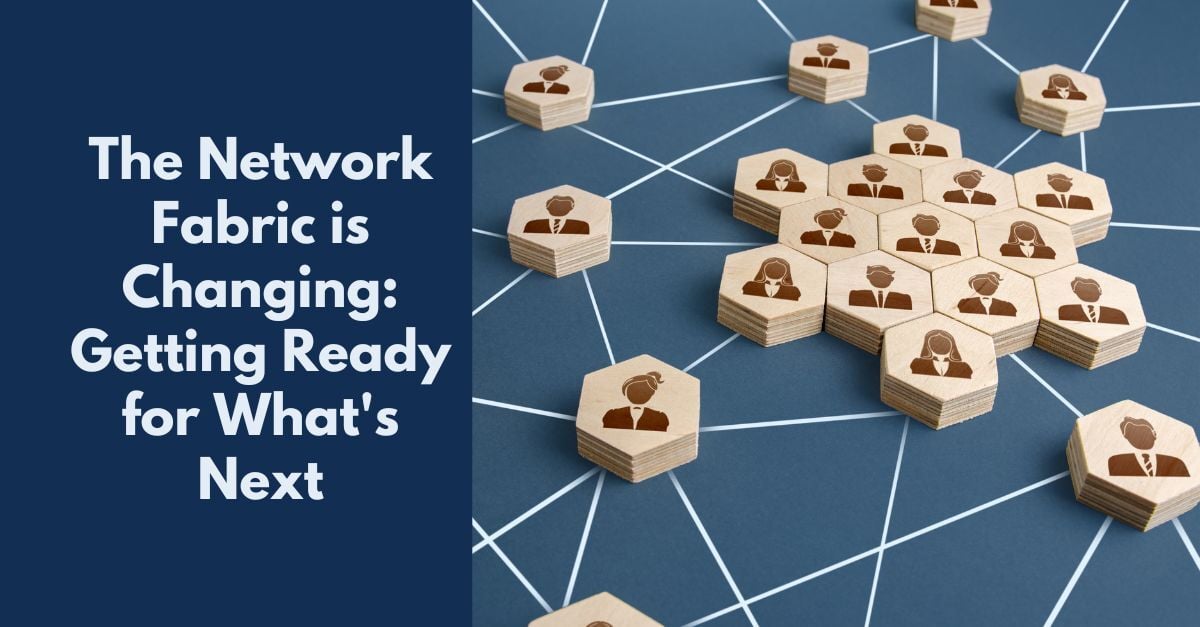2 min read
The Network Fabric is Changing: Getting Ready for What's Next
Think of your organization's network like a system of roads connecting everyone and everything. Traditionally, these "roads" were built in a...
2 min read
 Technium
:
Oct 29, 2025 11:00:53 AM
Technium
:
Oct 29, 2025 11:00:53 AM

Generative AI (GenAI) is moving fast.
It’s already reshaping how organizations conduct research, manage data, and make decisions. But as the technology evolves, so do the demands on the infrastructure that supports it. Most enterprises are still figuring out how to safely deploy AI without compromising performance, governance, or security.
For technology leaders, the question is no longer whether to use GenAI—it’s how to prepare your network to handle it securely and at scale.
GenAI workloads depend on rapid, uninterrupted data movement between edge, core, and cloud environments. These aren’t traditional traffic patterns. They’re high-volume, high-sensitivity, and continuously changing. A modern AI ecosystem functions more like a living network fabric—a system that must be flexible, secure, and fast enough to sustain complex workloads without losing visibility or control.
This is especially critical for industries where the data itself is the product: biotech, pharma, and life sciences organizations working with regulated clinical trial data and valuable research IP; healthcare systems operating under HIPAA constraints; federal and academic research institutions managing high-performance computing clusters; and finance and banking firms handling proprietary algorithms and transaction data.
For these sectors, even small breaches or delays can have serious regulatory, ethical, and financial implications.
At every stage, the network determines how data moves, who can access it, and what protections are in place.
As AI models absorb and process sensitive data, IT leaders face the challenge of controlling what leaves the enterprise boundary. Without segmentation, access controls, and clear audit trails, sensitive information can be exposed without anyone realizing it.
The line between open and enterprise-grade AI tools is often blurred. Licensing mistakes—like using community models in corporate environments—can introduce legal and compliance risks. Managing this requires visibility into where AI is running and what data it touches.
A secure AI strategy starts with network architecture. Technium’s Edge-to-Core-to-Cloud Fabric creates isolated but connected environments that protect critical data while supporting compute agility. It applies zero-trust principles, encrypts every data path, and uses redundant private circuits to keep AI workloads resilient. Treating network governance as part of AI governance ensures that data movement remains compliant and intentional.
Handled well, GenAI accelerates innovation. Handled poorly, it can create unseen risk and technical debt.
Building a secure, compliant, and high-availability network fabric is the foundation for sustainable AI adoption.
Technium, Inc. designs, builds, and operates Edge-to-Cloud Network Fabrics that carry New England’s most critical data, including the Markley Data Center Fabric, which supports over 90 percent of the region’s Internet traffic.
Our goal is to help CIOs and CTOs operate with confidence—delivering secure, high-performance network infrastructure built for the future of data-driven and highly regulated enterprises.
If your organization is exploring or expanding GenAI initiatives, Technium’s engineering team can conduct a Fabric Readiness Assessment to map a path toward a secure and scalable foundation.
At Technium, we help build and operate exceptional networks.

2 min read
Think of your organization's network like a system of roads connecting everyone and everything. Traditionally, these "roads" were built in a...
.png)
1 min read
For companies that are scaling, moving, or experiencing significant changes in their usage of the cloud, the challenges that...
.png)
2 min read
Generative AI (GenAI) is revolutionizing a variety of industries, offering unprecedented potential for innovation and enhancements in worker...